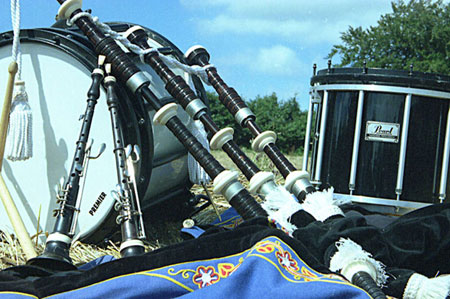Didier Squiban
Molène
1997
Tracks:
1. Suite Nr. 1 "Tri Men": 1. ArBaradoz 4:25
2. Suite Nr. 1 "Tri Men": 2. AnAlac'h 1:13
3. Suite Nr. 1 "Tri Men": 3. Suite d'An Dro du Pays Vannetais 3:59
4. Suite Nr. 1 "Tri Men": 4. Ledenez 3:26
5. Suite Nr. 1 "Tri Men": 5. Kost Ar C'hoat 5:05
6. Suite Nr. 1 "Tri Men": 6. Tri Men 4:33
7. Suite Nr. 2 "Ker Eon": 1. Iroise 3:17
8. Suite Nr. 2 "Ker Eon": 2. Suite de Gavottes des Montagnes 3:02
9. Suite Nr. 2 "Ker Eon": 3. AnSkoliater 2:26
10. Suite Nr. 2 "Ker Eon": 4. Trugerekat Men Dous 3:02
11. Suite Nr. 2 "Ker Eon": 5. Ker Eon 3:39
12. Suite Nr. 2 "Ker Eon": 6. Kerzhadenn-Pedenn 4:11
13. Suite Nr. 2 "Ker Eon": 7. Variations Sur Laridé à 6 Temps 4:45
14. Suite Nr. 3 "Bannec": 1. Marche des Conscrits du Faouët 4:08
15. Suite Nr. 3 "Bannec": 2. Enez Eusa 5:05
16. Suite Nr. 3 "Bannec": 3. Me Zo Ganet E Kreiz Ar Mor 3:49
17. Suite Nr. 3 "Bannec": 4. An Oed a Driverc'h Vle 3:06
18. Suite Nr. 3 "Bannec": 5. Bannec 2:17
♫☆`*♥¸¸.•*¨*•♫☆`*♥¸¸.•*¨*•♫
♫☆`*♥¸¸.•*¨*•♫☆`*♥¸¸.•*¨*•♫
“Une réalisation exceptionnelle et uniquement pianistique sur fond de musique raditionnelle. Un disque ou même les silences font du bruit et ne sont jamais les mêmes.”
(J.-J. Boiron, Musique Bretonne)
Didier Squiban (born 23 September 1959 in Saint-Renan (Finistère)) is a French pianist and composer.
His musical work is a combination of traditional Breton music, jazz improvisation and classical romanticism and has added the piano to the repertoire of modern Breton music.
He has been influenced by Duke Ellington, Keith Jarrett, Charlie Parker and Bill Evans as well as Debussy, Stravinsky, Erik Satie, Darius Milhaud, Schönberg and Glenn Gould. In 1993, he worked as the accompanying pianist for the Breton singer Yann-Fañch Kemener in the acclaimed live show Héritage des Celtes and thereby got closer in touch with the music of his home region Brittany. In 1997, on the island of his ancestors, Molène, he recorded his first Breton solo piano album: "Molène".

Outstanding pianist, arranger and composer, Didier Squiban is equally renowned as the director of his jazz orchestra. His musical work is the happy combination of traditional Breton music, jazz improvisation and classical romanticism. He reveals in this alchemy an exceptional talent.
He begins the piano in 1959 with a classical background at the Brest Conservatoire of Music. As he discovers Bill Evans, Herbie Hancock, he'll turn his music to jazz. A few years after, he'll go into Breton music, a music that surrounded him from 1987 to 1993 through concerts in common with Manu Lannhuel, Kristen Noguès...
Since 1994, as he takes part to the 'Heritage des Celtes' and performs regularly with Yann-Fañch Kemener, he'll go deeper into Breton music and create his own show: 'Brest 96' with 'An Tour Tan'.
In 1997 is produced his first solo album, 'Molène' with a huge welcome from the audience (Breton music as well as jazz or classical music lovers). Two years later, comes the second one 'Porz gwenn', in February 2000, his live album, recorded during the 1999 Festival de Lorient concert. And finally, the 'Symphonie Bretagne' where he's joined by the Bretagne Orchestra directed by Didier Benetti, the Contrepoint choir, Josik Allot and his bombard, Bernard le Dréau and René Goaer with their saxes, Alain Trévarin and his accordion and Jean Chevalier with his drums. An album orchestrated by Pierre-Yves Moign.
The 'Rozbras'album, a new step into Dider's classical-jazzy-celtic musical world. Like 'Molène' and 'Porz gwenn', together with the CD comes a booklet with beautiful pictures by Michel Thersiquel, one of Brittany's most famous photographers.
The 'Ballades' album is a musical voyage along the Globe. From Marrakech or Istambul to Asia (where Didier had an important tour in 2002) and back to Scotland, Ireland and Brittany.
In the latest album, 'Symphonie Iroise', Didier meets once again the Orchestre de Bretagne directed by Alain Altinoglu and also his usual crew : Bernard Le Dréau playing saxophones, Alain Trévarin for accordeon, Jean Chevalier with the drums, Erwan Keravec the piper and Manu Lann Huel the singer.
source
photos de Michel Thersiquel
*´♥`*































































































+Front.jpg)

















